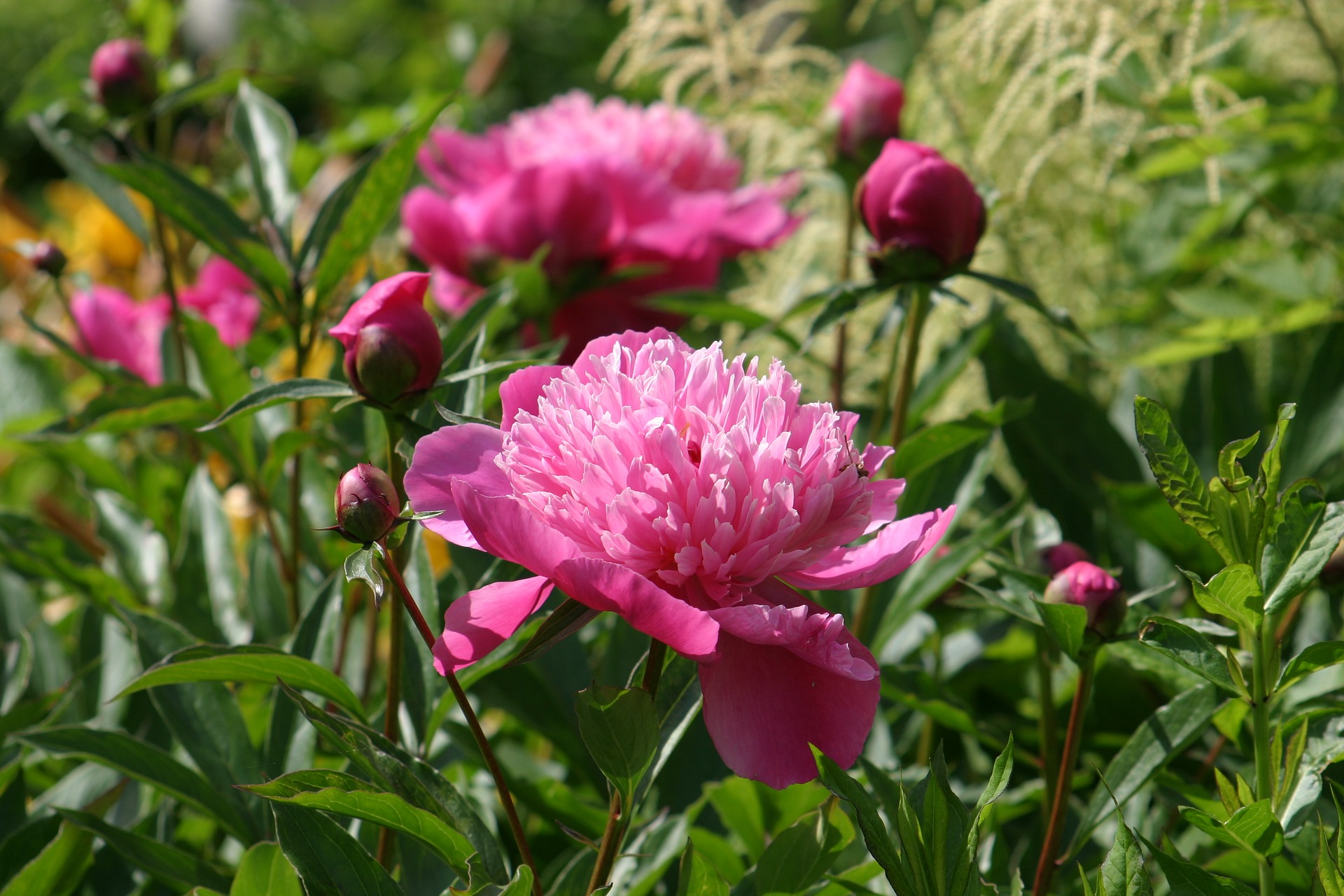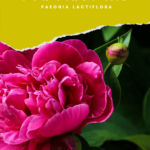Links contained in this post and elsewhere on my website may include affiliate links. When you make a purchase through these links, I earn a commission at no additional cost to you. I only link to products and services that I love - and that I think you will love, too!
Peony for emergency preparedness? Peony for herbal first aid? Surely not! I can hear you laughing as you think about it. It’s just a pretty garden flower, right? Read on, and you might be surprised at the versatile ways peony supports health. There are many peony benefits that place it high on my list of emergency preparedness herbs.
When I highlight a plant that I think is a good preparedness plant, there are several things that I take into consideration. One is availability or ease of cultivation, and the other is versatility. I also look at the history of use, as oftentimes there are surprising uses that we currently don’t have a need for but probably shouldn’t forget. Just in case.
Peony is a great fit for all of these categories. Plus, it’s absolutely gorgeous. Read on to learn more about why peony is a perfect addition to your preparedness garden!
What species should you grow?
As far as availability and ease of cultivation, peony is a popular and hardy garden flower. We’re talking about Paeonia lactiflora a common variety found growing in flower gardens in the United States. For more info, I wrote an article on the different species that can be found here- it also covers more information on the forgotten history of this plant.
You can also check what species is currently growing in your garden if you know the cultivar name. The American Peony Society has a searchable database you can use here.
How to grow peony
Peony is a very long-lived perennial and can be cultivated from seed or by root division. If you ask around, it should be fairly easy to find someone who would be more than happy to share some peony plants with you. They really do have a cult following among gardeners. At least here in the South, pass-along plant culture is also a big part of our gardening tradition.
Peony is also easily found in garden centers in the spring and fall, and through online nurseries. I’ve never tried growing it from seed, personally, so I don’t know how difficult that might prove to be. I prefer buying plants or live roots.
Peonies spread readily by their roots. After a few years, you will need to dig up your peony patch and separate the plants to give them more space. If the flowers seem smaller than usual or the peonies look crowded, there’s a good chance it’s time. Wait until the fall, when the roots are healthiest. This is also a perfect time to harvest!
Peony uses for emergency preparedness
Peony has a wide range of traditional herbal uses. It’s a valuable women’s herb, a traditional antispasmodic and nervine, and traditionally used for relief of pain and inflammation. Peony has also historically been employed for high fevers and recovery from traumatic injury. With so many uses, you can see why it is an excellent addition to the garden for preppers.
Here’s a brief list I’ve compiled from various sources. Check the resource list at the bottom if you’re interested in more info- I’ve pulled from historic sources as well as modern ones.
Pandemic preparedness
- aches and pains from flu (early American herbalism and TCM)
- pertussis (antispasmodic, early American herbalism)
- high fevers with extreme fluid loss from sweating (TCM)
- hemorrhagic fevers (TCM)
- traditional antispasmodic in cough formulas (early American herbalism)
Peony uses for pain
- acute aches and pains (Traditional Chinese Medicine)
- muscle spasms (Traditional Chinese Medicine and Western Herbalism)
Women’s health
- irregular periods, especially with cramping and heavy bleeding (Traditional Chinese Medicine)
- in formulas for guarding against miscarriage (TCM)
- as a blood and yin tonic to nourish mothers after childbirth (TCM)
Immune system
- inflammatory states associated with autoimmune conditions (Traditional Chinese Medicine, modern research)
- used in formulas to support Wei Qi (TCM)
Nervous system
- traditional for epilepsy (dates back to Galen or prior)
- nightmares (noted by Gerard, although he preferred the seeds for this rather than the root)
- supporting convalescence from brain injuries (this use is described briefly by Matthew Wood in The Earthwise Herbal)
How to safely use peony
Learning how to determine serving sizes for herbs is a topic that needs its own blog post. For general guidelines, I look to TCM. In Healing with the Herbs of Life, Leslie Tierra recommends 6-15 grams.
Because it’s a root, making peony tea requires special treatment. A decoction is essentially a longer, more intense way of brewing an infusion (which is what most people think of as “tea”). The amount of herb used is determined based on the severity of the imbalance, whether it is chronic or acute, and the constitution of the individual.
To decoct peony root, simmer the dried roots gently in 1-2 cups of water for ten minutes. Remove from the heat and allow to soak for thirty minutes. Strain out the roots before serving. You can reuse the roots to make a second batch. If you like, you can prepare several servings at once and store them in the refrigerator.
Make a peony root extract
To make your own peony root extract, use 1 ounce of dried, powdered root (by weight) per 5 oz of quality vodka (by volume). Use 100 proof if it’s available, but 80 proof is also fine.
Combine the vodka and powdered herbs in a glass canning jar and cover with a clean lid. Let this sit for a minimum of two weeks and strain through clean muslin or flannel. Shake it for a few minutes every day to help make the extract stronger.
A serving size is 20-60 drops, 3-4 times a day. Actually, I hate dropper bottle caps with a passion- so lets have that in teaspoons, shall we? 50-60 drops is roughly half a teaspoon.
More articles about peony
Learn more about the types of peony used by herbalists and the herbal uses of peony in these articles here on Indie Herbalist.
Peony root and the immune system
The Forgotten History of Paeonia Lactiflora
References
Felter, H.W.; Lloyd, J.U. (1898) King’s American Dispensatory. http://www.henriettes-herb.com/eclectic/kings/paeonia.html
Dharmananda, S. (2002) White peony, red peony, and moutan: three chinese herbs derived from Paeonia. http://www.itmonline.org/arts/peony.htm
He, D. Y., & Dai, S. M. (2011). Anti-inflammatory and immunomodulatory effects of paeonia lactiflora pall., a traditional chinese herbal medicine. Frontiers in pharmacology, 2, 10. https://doi.org/10.3389/fphar.2011.00010 http://www.ncbi.nlm.nih.gov/pmc/articles/PMC3108611/
Wood, Mathhew. (2008) The Earthwise Herbal. Vol. 1. North Atlantic Books.
Tierra, Leslie (2003) Healing With the Herbs of Life. Crossing Press.








